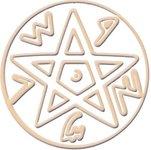Lecturer: Dr. Mae Goder-Goldberger, Dept. of Bible Studies and Archaeology, Ben-Gurion University
The site of Boker Tachtit located in the central Negev, Israel, was first excavated by A.E. Marks in the 1970's. The site is situated within the main ecological corridor connecting Africa with Eurasia, and, chronologically, positioned at the interface between the Middle and Upper Palaeolithic. Renewed excavations at Boker Tachtit (2013-2014) were carried out as part of a broader collaborative study titled 'Timing of Cultural Change' in the frame of Max Planck Weizmann Center for Integrative Anthropology and Archaeology. These excavations were aimed at secure the dating of the site using absolute dating methods, and to better understand the technological affinities of the assemblages and their possible origins. The focus of this study is on the latter aim. The chaine opératoire approach, combined with an attribute analysis and refitting, is used to relate the newly excavated assemblages with the ones from the old excavation. Using this method, differences between the archaeological units at the site were highlighted and a regional comparative study was carried out in search of possible antecedents.
The lithic analysis of the assemblages from the renewed excavation suggests that the sequence at Boker Tachtit represents one of the earliest Upper Palaeolithic traditions. Other sites within a similar geographical and chronological context, such as Taramsa 1 in the Nile Valley and Tor Sadaf in Jordan, reflect a similar, although not identical, portraying a shift from a blade technology with Levallois elements to a true blade technology. Each of these assemblages reflects the same conceptual technological change while retaining unique techno-typological traits indicating a fusion of indigenous and exogenous lithic traditions.
Readings:
Belfer-Cohen A., Goring-Morris A.N. 2009. The shift from the Middle Palaeolithic to the Upper Palaeolithic: Levantine perspectives. In: Camps M., Szmidt C. (eds.), The Mediterranean from 50,000 to 25,000 BP: Turning Points and New Directions. Oxford, Oxbow Books, pp.89-100.
Hovers E. 2009. Discussion 4: The Middle to Upper Paleolithic transition. What new? In: Camps M., Chauhan P. (eds.) Sourcebook of Paleolithic Transitions, Methods, Theories and Interpretations. Springer. Pp. 455-462.
Kuhn, S.L., Zwyns, N., 2014. Rethinking the initial Upper Paleolithic. Quaternary International 347, 29-38.
Marks, A.E., Kaufman, D., 1983. Boker Tachtit: the artifacts. In: Marks, A.E. (Ed.), Prehistory and Paleoenvironments in the Central Negev, Israel, Vol III. Southern Methodist University Press, Dallas. Pp. 69-126.
Tostevin, G.B., 2003. A quest for antecedents: A comparison of the terminal Middle Palaeolithic and Early Upper Palaeolithic of the Levant. In: Goring-Morris, N.A., Belfer-Cohen, A. (Eds.), More than Meets the Eye: Studies on Upper Palaeolithic Diversity in the Near East. Oxbow Press, Oxford, pp.54-67.
Volkman, P., 1983. Boker Tachtit: Core reconstructions. In: Marks, A.E. (Ed.), Prehistory and Paleoenvironments in the Central Negev, Israel, Vol III. Southern Methodist University Press, Dallas. Pp. 127-190

